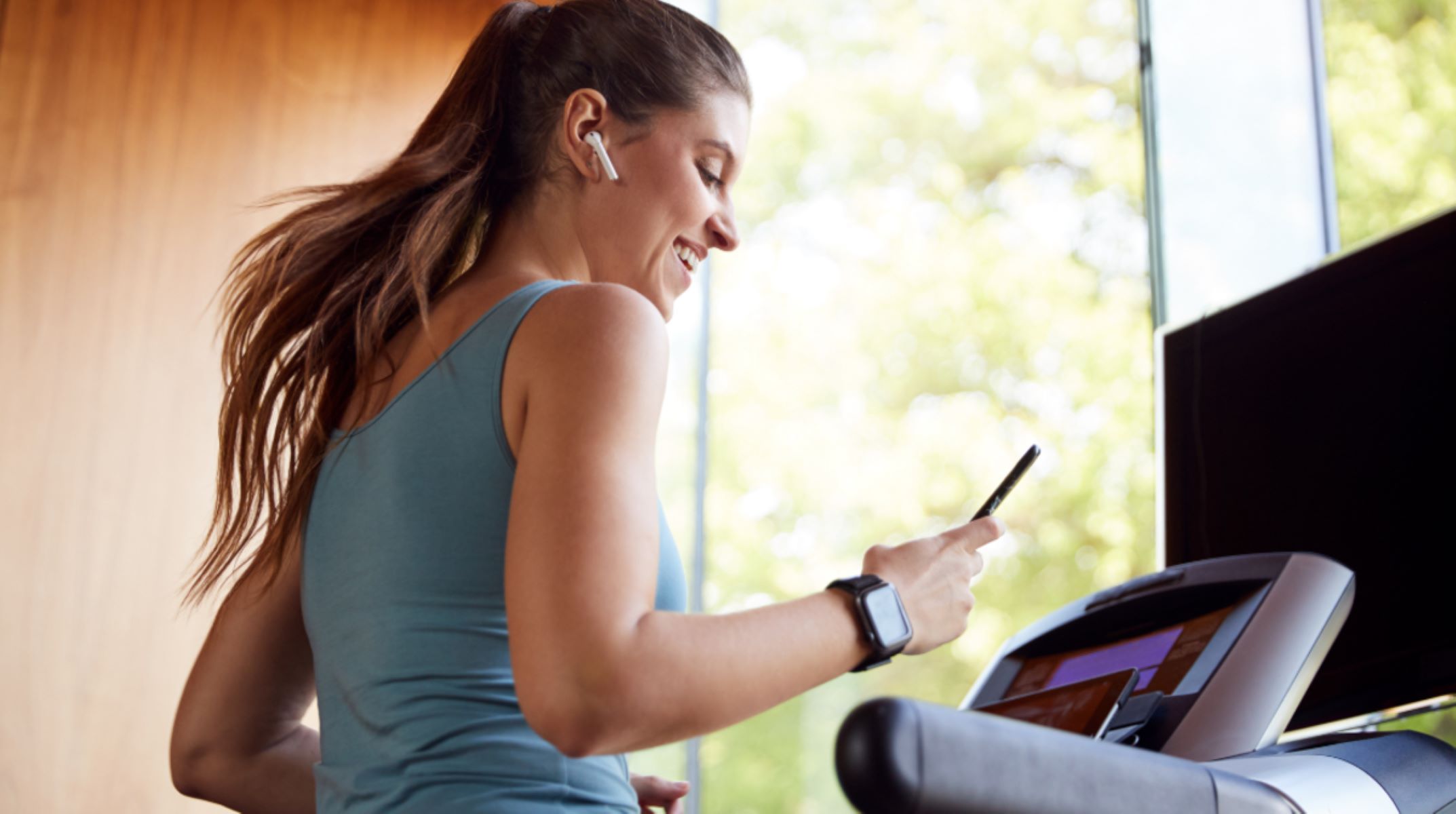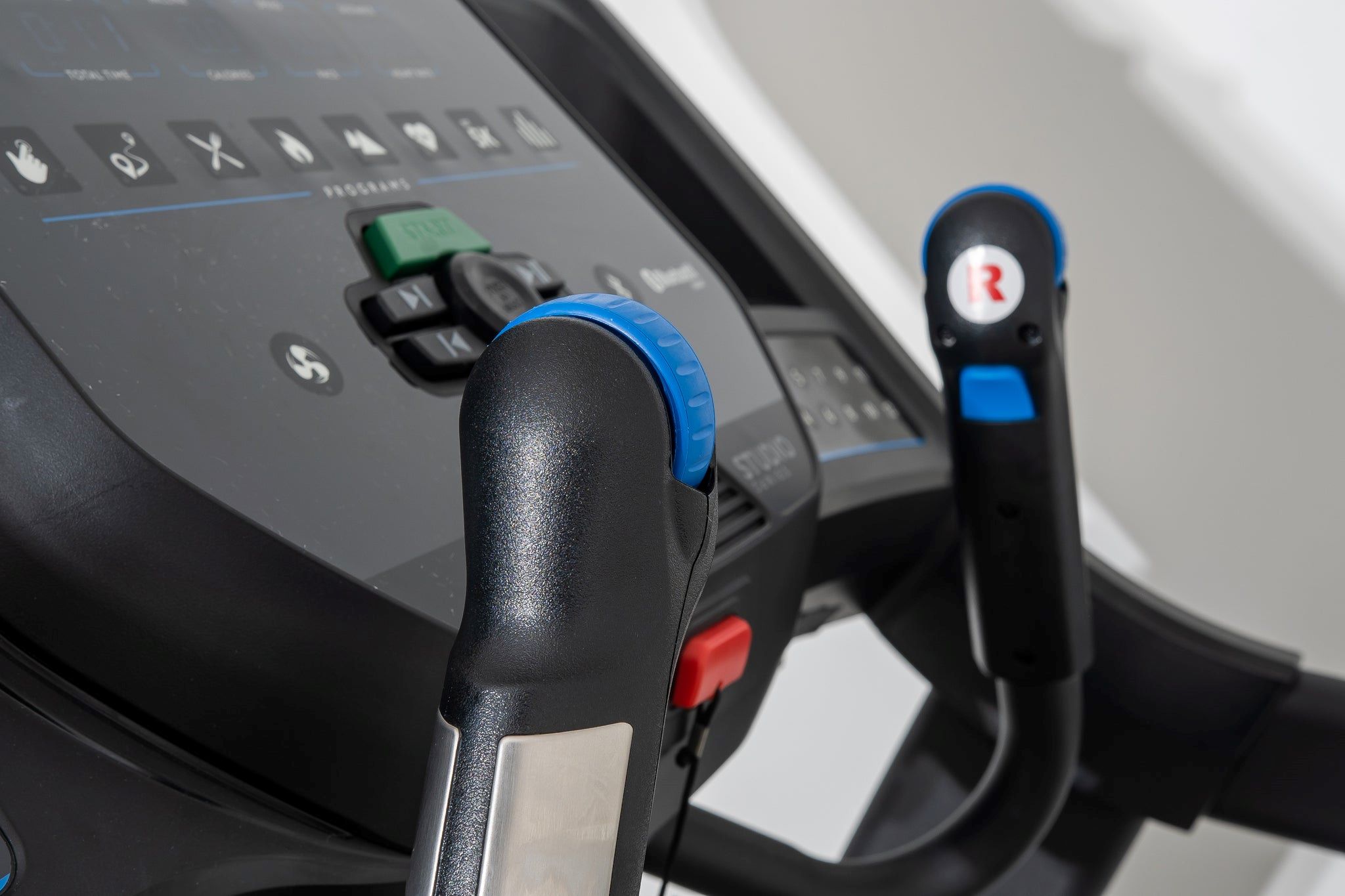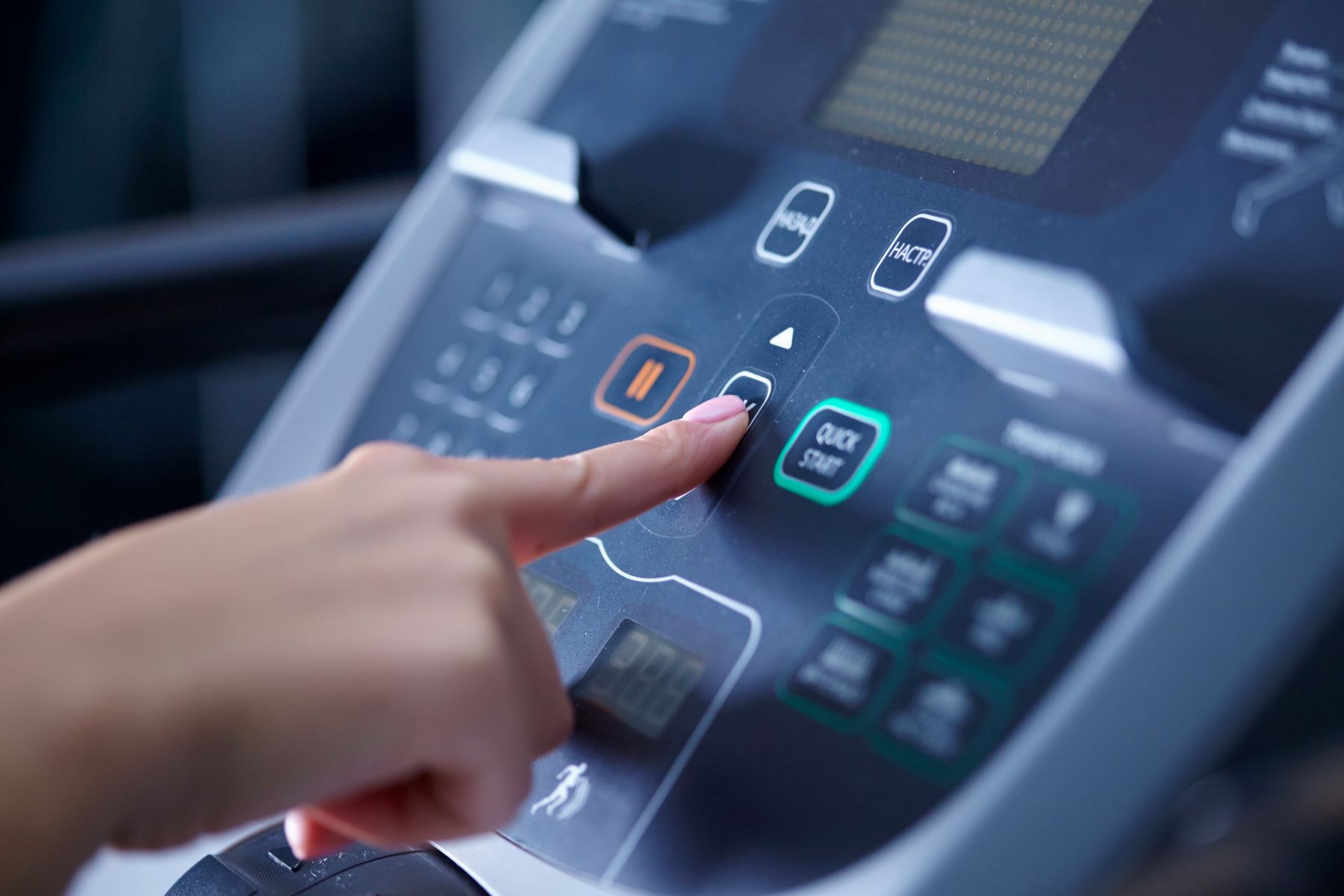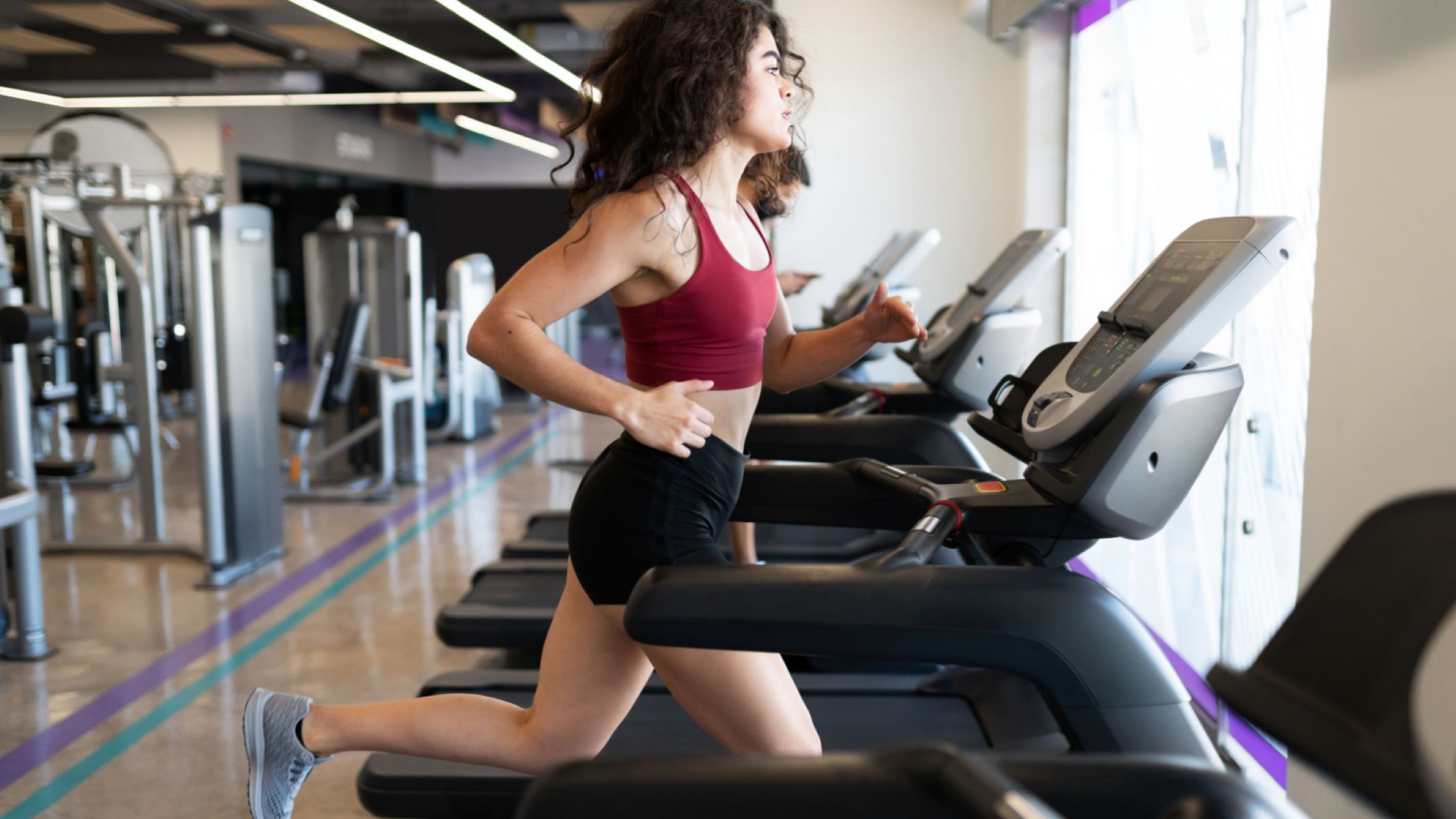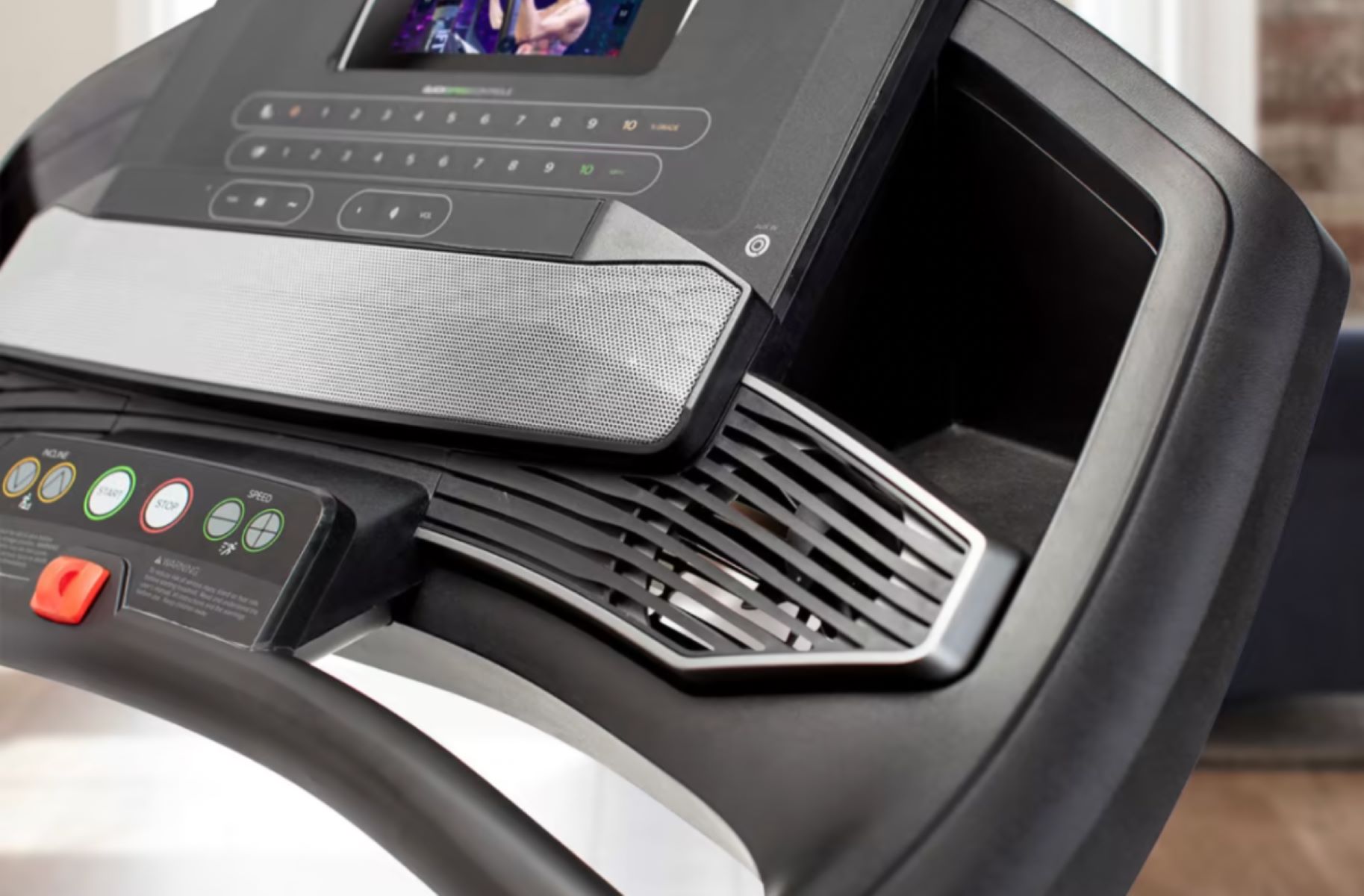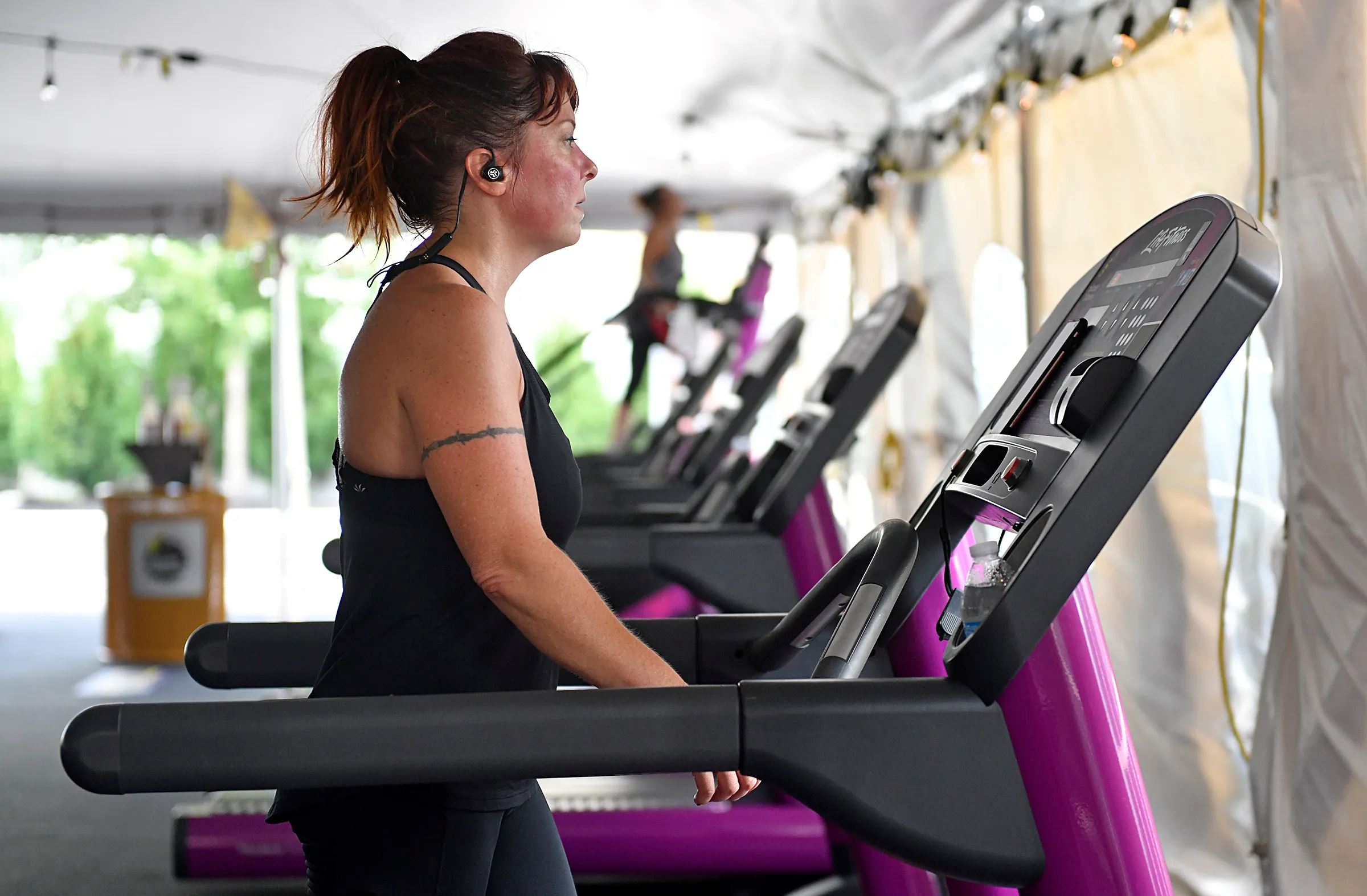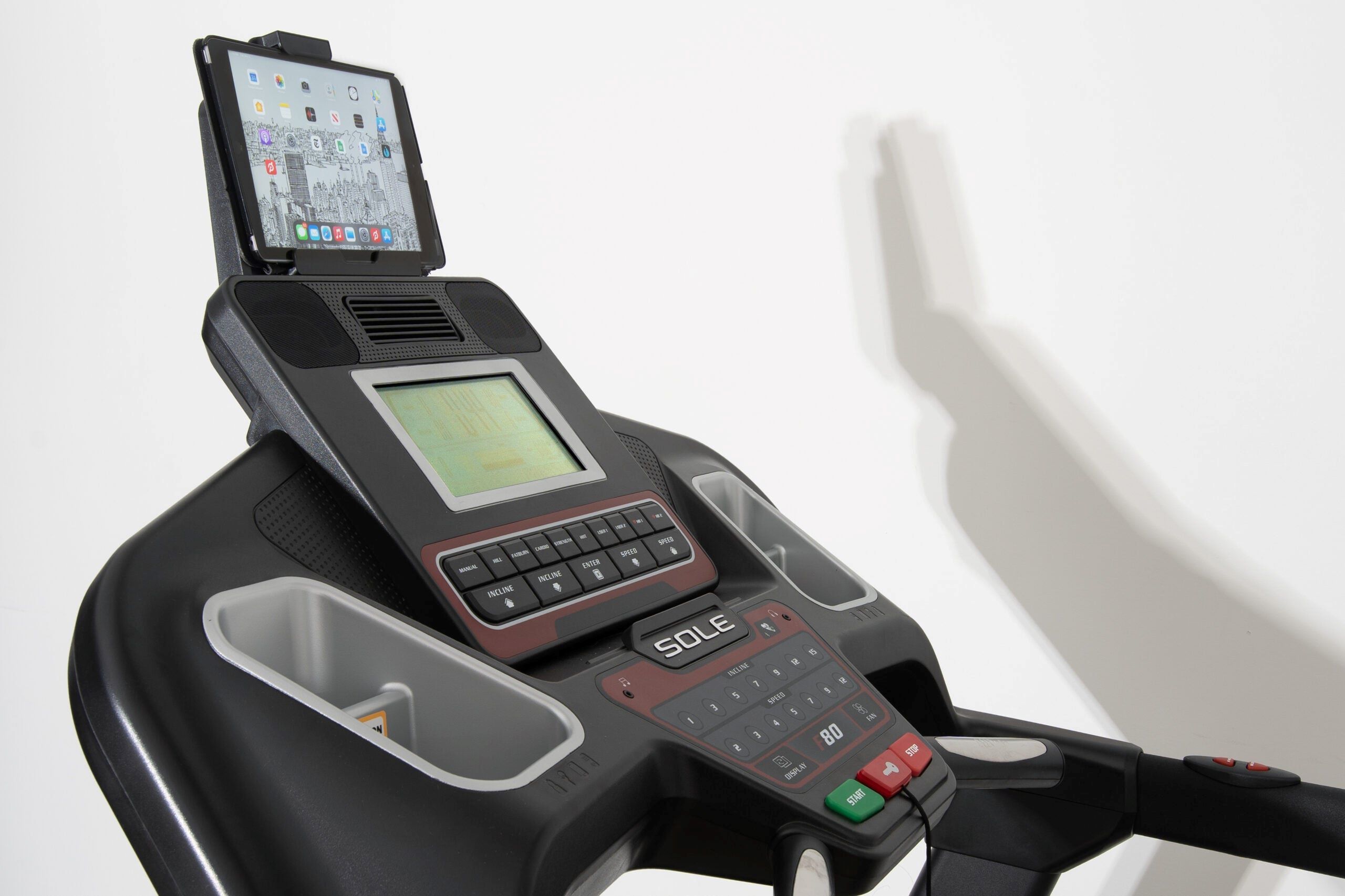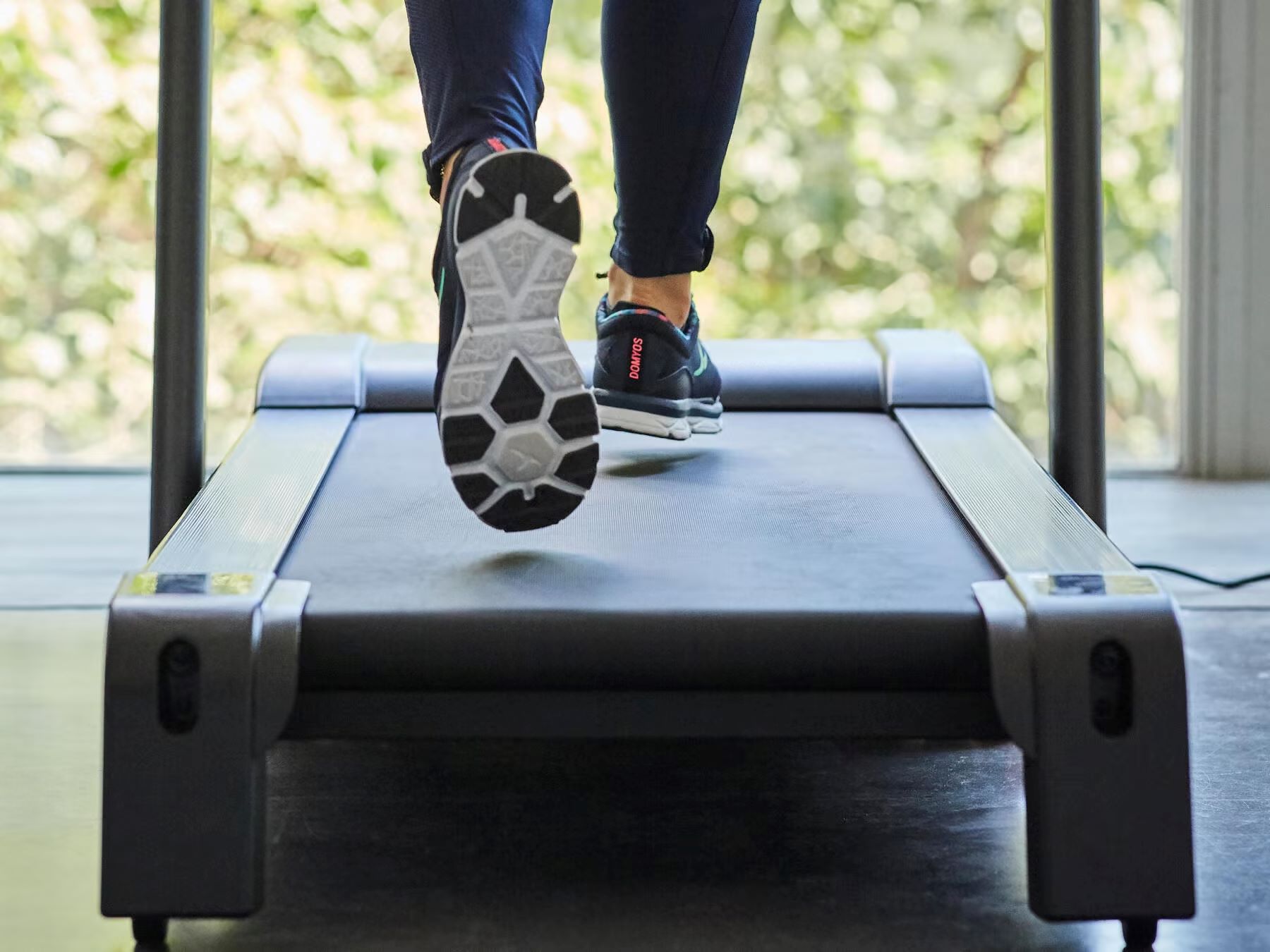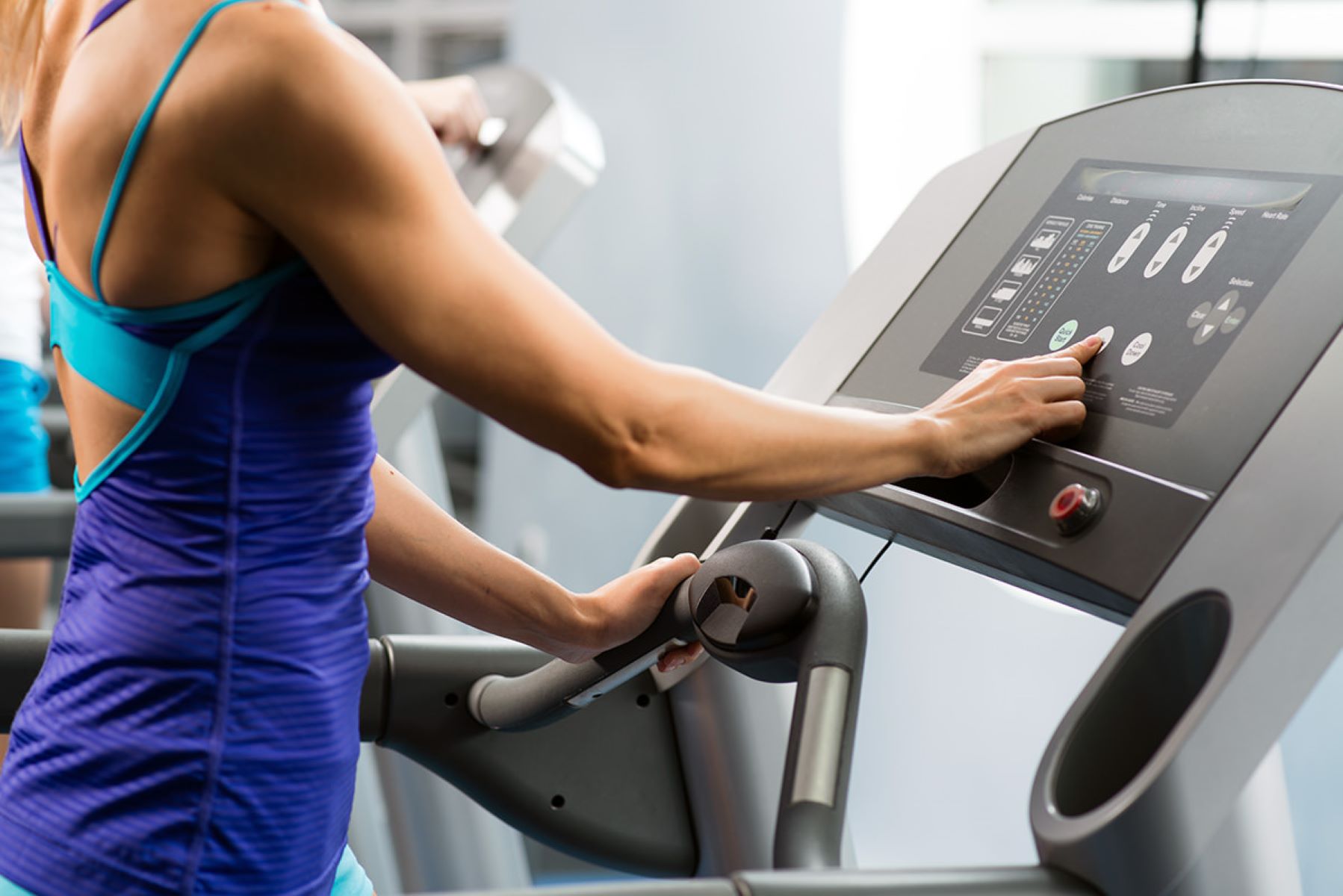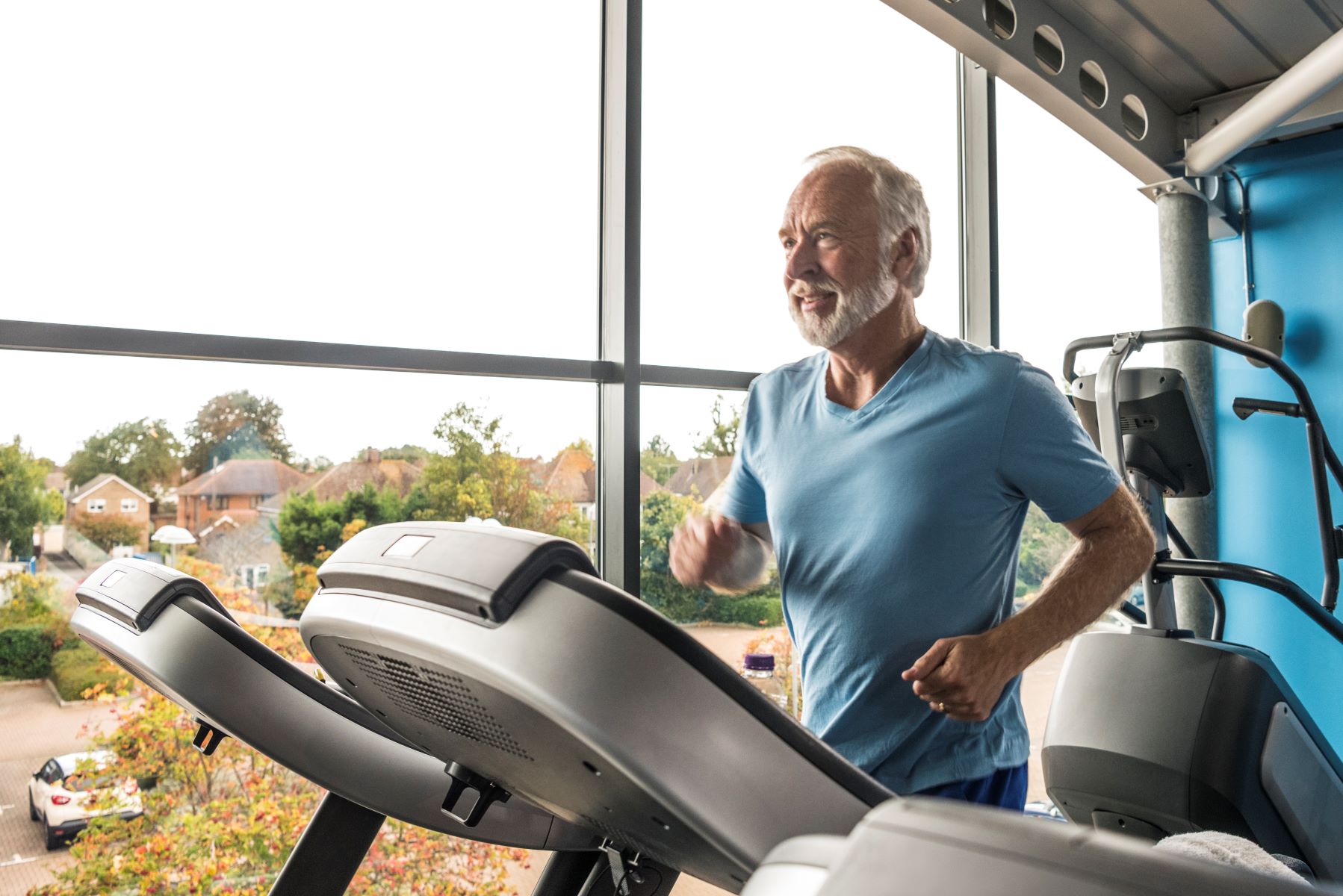

Featured
How Accurate Are Treadmill Distances
Modified: January 2, 2024
Discover how accurate treadmill distances really are with this featured article. Find out if your treadmill is measuring your runs accurately.
Introduction
Treadmills have become a popular choice for indoor exercise, offering convenience, safety, and the ability to track various metrics, including distance covered. However, there has been ongoing debate about the accuracy of treadmill distance measurements. Many individuals question whether the distances displayed on treadmills truly reflect the distances they would cover during outdoor running or walking.
Factors such as stride length, incline, and calibration can all impact the accuracy of treadmill distance measurements. Understanding these factors and how they affect the results can help individuals better assess and interpret the distances recorded on their treadmills.
In this article, we will explore the various factors that can affect treadmill distance accuracy. We will also delve into the calibration process and discuss how treadmill distances compare to outdoor running distances. By gaining a deeper understanding of these concepts, you can make informed decisions about your treadmill workouts and have a clearer idea of the distances you are actually covering.
Factors Affecting Treadmill Distance Accuracy
There are several key factors that can impact the accuracy of treadmill distance measurements. Understanding these factors can help you assess and interpret the distances displayed on your treadmill more effectively. Let’s take a closer look at each of these factors:
- Stride Length: Stride length refers to the distance covered with each step you take while running or walking. Treadmills typically have default stride length settings, but they may not accurately represent your individual stride. If the stride length on your treadmill is not aligned with your natural stride, it can lead to inaccurate distance measurements.
- Incline: When you run or walk on a treadmill with an incline, you are essentially adding an extra vertical component to your stride. This means that the treadmill will measure a longer distance compared to running or walking on a flat surface. The steeper the incline, the greater the discrepancy between treadmill distance and outdoor running distance.
- Calibration: Treadmills need to be calibrated regularly to ensure accurate distance measurements. Calibration involves setting the treadmill’s speed and incline to match the known measurements. Over time, treadmills can drift from their original calibration, leading to inaccuracies in distance measurements. It is essential to follow the manufacturer’s guidelines for calibration to maintain accuracy.
- Speed Settings: Treadmills allow you to set your desired speed, whether it’s a slow walk or a fast run. However, it’s important to note that the actual speed on the treadmill may not match the displayed speed due to various factors, such as motor performance and belt friction. Inaccuracies in speed settings can affect the accuracy of distance measurements.
- Surface and Footwear: The surface on which the treadmill is placed can impact its accuracy. A stable and level surface is crucial to ensure proper belt alignment and consistent distance measurements. Additionally, the type of footwear you use can also affect stride length and the accuracy of distance measurements. Wearing appropriate running shoes can help maintain consistency and accuracy.
By being aware of these factors and taking them into consideration, you can better understand and interpret the distances displayed on your treadmill. Remember that small variations in distance accuracy are common, and they do not necessarily indicate a faulty or malfunctioning machine. Regular maintenance, calibration, and paying attention to your stride and footwear can help improve the accuracy of your treadmill distance measurements.
Calibration of Treadmills
Calibration is a critical aspect of ensuring the accuracy of treadmill distance measurements. Regular calibration is essential to maintain the reliability of your treadmill’s distance readings. Here’s what you need to know about the calibration process:
1. Manufacturer’s Guidelines: Each treadmill model may have specific calibration instructions provided by the manufacturer. It is crucial to refer to the user manual or online resources for the correct calibration procedure. Following the manufacturer’s guidelines will help you achieve accurate distance measurements.
2. Calibrating Speed: Calibration involves verifying the speed accuracy of your treadmill. You can use a known distance, such as a marked track or a GPS-tracked route, to check how closely the treadmill’s speed matches the actual distance covered. Adjust the speed settings accordingly to ensure accurate measurements.
3. Calibrating Incline: If your treadmill has an incline feature, it is important to calibrate it as well. Use a leveling tool to ensure that the incline accurately matches the specified setting. An incline that is not aligned correctly can lead to inaccurate distance measurements.
4. Regular Check-ups: Calibration is not a one-time process. It is recommended to regularly check and recalibrate your treadmill to account for any changes or drift that may occur over time. How frequently you need to calibrate will depend on factors such as usage frequency, intensity, and the manufacturer’s recommendations.
5. Professional Assistance: If you are unsure about calibrating your treadmill or want to ensure precise and accurate measurements, consider seeking professional assistance. Fitness equipment technicians or treadmill manufacturers can provide expert calibration services to ensure optimal accuracy.
Remember that calibration is necessary to account for any discrepancies that may arise over time due to wear and tear, variation in belt tension, or other factors. By regularly calibrating your treadmill, you can enhance the accuracy of distance measurements and ensure that you are tracking your progress effectively.
Comparing Treadmill Distances to Outdoor Running Distances
One common question that arises when using a treadmill is how the distances recorded on the machine compare to running outside. It’s important to understand that there can be variations between treadmill distances and outdoor running distances due to several factors:
1. Environmental Factors: When running outdoors, you encounter variables such as wind resistance, changes in terrain, and uneven surfaces. These factors can impact your speed and stride length, resulting in variations in the distance covered compared to running on a treadmill with a flat and controlled surface.
2. Stride and Gait: Your stride length and gait pattern may differ when running on a treadmill compared to running outdoors. On a treadmill, you may naturally adjust your stride length to accommodate the steady belt movement, which can affect the distance covered. Outdoor running, on the other hand, allows for more freedom in stride length and natural variations in gait.
3. Incline Difference: Treadmills offer the ability to simulate incline settings, but the incline gradient on a treadmill and outdoor terrain may not be equivalent. Running uphill or downhill outdoors requires additional effort and may result in a different distance compared to running on a treadmill with a set incline.
4. Biomechanical Differences: Running on a treadmill imposes a repetitive and consistent motion compared to the dynamic and ever-changing movement of outdoor running. The biomechanics of treadmill running can vary from outdoor running, potentially affecting the distance covered.
While there may be variations in distance measurements between treadmills and outdoor running, it’s important to focus on the consistency of your own progress. If you primarily use a treadmill for your workouts, track your distances and progress based on the treadmill measurements. This will provide you with accurate and meaningful data to monitor your fitness journey.
If you transition from treadmill running to outdoor running or participate in races, you may find that your outdoor running distances differ from your treadmill distances. This is normal and can be attributed to the factors mentioned above. It’s advisable to train specifically for outdoor running to acclimate to the environmental factors and variations in terrain.
Ultimately, whether you run on a treadmill or outdoors, the most important aspect is to focus on your goals, maintain consistency in your training, and enjoy the benefits of regular exercise, regardless of slight variations in distance measurements.
Accuracy of Treadmill Distance Measurements
When it comes to the accuracy of treadmill distance measurements, it’s essential to understand that no system is perfect. While treadmills strive to provide accurate readings, there can be slight variations and discrepancies between the displayed distance and the actual distance covered. Here’s what you need to know about the accuracy of treadmill distance measurements:
1. Sensor Technology: Most modern treadmills use advanced sensor technology to track distance, such as a magnetic pickup or optical sensor. These sensors work by detecting the rotation of the treadmill belt and translating it into distance measurements. While these sensors are generally reliable, they may not account for individual variations in stride length or running technique.
2. Maintenance and Wear: Regular maintenance of your treadmill is crucial for accurate distance measurements. Over time, components like the belt, motor, and sensors may wear down, leading to potential inaccuracies. It’s important to follow the manufacturer’s maintenance guidelines to ensure optimal performance. Additionally, make sure to keep the belt clean and properly lubricated as excessive friction can affect the accuracy of distance measurements.
3. Electronic Calibration: Treadmills typically come with calibration settings that allow you to adjust the distance accuracy. It is important to calibrate your treadmill periodically as mentioned in the manufacturer’s guidelines. By calibrating the machine, you can minimize any potential errors and ensure more accurate distance measurements.
4. Individual Variations: Each person has a unique running or walking style, which can impact the accuracy of distance measurements on a treadmill. Factors like stride length, foot placement, and running form can all contribute to variations. It’s essential to consider these individual differences when analyzing treadmill distance data.
While some variations in distance measurements are unavoidable, it is still possible to use treadmill distance as a valuable tool for tracking your progress and achieving your fitness goals. By focusing on the consistency of your workouts and using the treadmill measurements as a baseline, you can effectively monitor your improvements over time.
Keep in mind that the accuracy of distance measurements may differ between various treadmill models. It is recommended to consult user reviews, seek professional guidance, or conduct your own comparison tests to determine which treadmill best suits your accuracy requirements.
Overall, while treadmill distance measurements may not be 100% accurate and may have slight variations, they still provide a valuable tool for monitoring and tracking your fitness progress, helping you stay motivated and on track towards your goals.
Variations in Treadmill Accuracy
It’s important to acknowledge that there can be variations in the accuracy of treadmill distance measurements. These variations can arise due to several factors, including:
1. Treadmill Brand and Model: Different treadmill brands and models may have varying degrees of accuracy when it comes to distance measurements. Some models may have more advanced sensor technology or better calibration options, resulting in more precise distance readings. It’s essential to research and choose a reputable treadmill brand that is known for its accuracy.
2. Age and Condition: As treadmills age or experience wear and tear, there can be a decline in their accuracy. Components such as the belt, sensors, and electronics may deteriorate, leading to inconsistencies in distance measurements. Regular maintenance and timely replacement of worn-out parts can help minimize these inaccuracies.
3. Speed and Incline Settings: The accuracy of distance measurements can be affected by the speed and incline settings on the treadmill. Higher speeds or steep inclines can sometimes result in slight variations in distance readings. It’s important to set the treadmill to the desired speed and incline level during calibration and use consistent settings to maintain accuracy.
4. Environmental Factors: Factors such as temperature, humidity, and electrical interference can also impact the accuracy of treadmill distance measurements. Extreme weather conditions or nearby electronics emitting electromagnetic signals can introduce slight inaccuracies in the readings. However, these variations are often minimal and do not significantly affect overall accuracy.
5. User Variables: Individual differences among users can also contribute to variations in treadmill accuracy. Factors such as stride length, foot placement, and running or walking style can all affect the distance measurements. People with longer strides may cover more distance with each step, resulting in slightly different readings compared to those with shorter strides.
It’s important to understand that these variations in treadmill accuracy are typically small and within an acceptable range. While they may exist, they do not necessarily invalidate the usefulness of treadmill distance measurements. Keep in mind that the consistency and trends in your own distance measurements are often more important than absolute precision.
When comparing distances between workouts or tracking your progress over time, it is advisable to focus on the relative changes and improvement rather than getting fixated on slight variations in accuracy. By using the same treadmill consistently and following proper calibration procedures, you can maintain a reliable baseline for your distance measurements.
Ultimately, variations in treadmill accuracy should be seen as normal and expected. Understanding these variations and recognizing their potential effects can help you interpret distance measurements more effectively and make informed decisions about your fitness goals and progress.
Tips for Improving Treadmill Distance Accuracy
While treadmill distance accuracy can be influenced by various factors, there are several tips you can follow to improve the accuracy of your distance measurements. Implementing these tips can help you track your progress more effectively and ensure more reliable data:
1. Calibrate Regularly: Follow the manufacturer’s guidelines for calibration and calibrate your treadmill regularly. The calibration process helps align the treadmill’s measurements with known distances, ensuring more accurate results.
2. Use Proper Footwear: Wearing appropriate running or walking shoes can help maintain a consistent stride and reduce variations in distance measurements. Invest in footwear that provides adequate support and cushioning for your specific activity.
3. Ensure Stable Surface: Place your treadmill on a stable and level surface to ensure proper alignment and minimize any vibrations that could affect the accuracy of distance measurements. An unstable surface may introduce slight variations in the readings.
4. Pay Attention to Stride Length: Be mindful of your stride length when running or walking on a treadmill. Try to maintain a consistent and natural stride to ensure more accurate distance measurements. Avoid overstriding or taking smaller-than-usual steps that can introduce variations in the readings.
5. Warm up and Cool Down: Include warm-up and cool-down periods in your treadmill workouts. These shorter distances at the beginning and end of your session help to establish a consistent starting point and endpoint, improving the overall accuracy of distance measurements.
6. Monitor Speed and Incline Settings: Pay attention to the speed and incline settings on your treadmill. Ensure that the machine is set to the desired speed and incline level during calibration and throughout your workouts. Consistent settings contribute to more accurate distance measurements.
7. Keep the Belt Clean and Lubricated: Regularly clean the treadmill belt to remove dirt, dust, and debris. Additionally, lubricating the belt as per the manufacturer’s recommendations helps to reduce friction, ensuring smoother operation and more accurate distance measurements.
8. Track Relative Progress over Absolute Accuracy: Instead of dwelling on absolute accuracy, focus on the relative progress within your own treadmill workouts. Pay attention to the consistency and trends in your distance measurements over time to gauge your improvement effectively.
By following these tips, you can enhance the accuracy of treadmill distance measurements and have a better understanding of your progress towards your fitness goals. However, it’s important to remember that small variations in accuracy are normal and should not discourage you from using the treadmill as a valuable tool for tracking your workout performance.
Conclusion
Treadmill distance accuracy is a topic that has been subject to much discussion and debate. While there may be variations and factors that can affect the accuracy of distance measurements, treadmills remain a valuable tool for tracking and monitoring your fitness progress.
Factors such as stride length, incline, calibration, speed settings, and environmental conditions can impact the accuracy of treadmill distance measurements. However, by understanding these factors and following certain tips to improve accuracy, you can still rely on treadmill distance as a useful metric for tracking your workouts.
Regular calibration, using proper footwear, maintaining a stable surface, paying attention to stride length, and keeping the treadmill clean and lubricated are all important steps to enhance the accuracy of distance measurements. Additionally, focusing on relative progress and trends in your own workouts can provide a more meaningful assessment of your fitness journey.
It’s important to remember that small variations in accuracy are common and should not discourage you from using a treadmill for your indoor workouts. The convenience, safety, and ability to track various metrics make treadmills an excellent choice for maintaining a consistent exercise routine.
By being aware of the factors affecting treadmill accuracy, implementing the tips mentioned, and understanding the limitations of distance measurements, you can effectively utilize your treadmill and make informed decisions about your fitness goals and progress.
So, embrace the benefits of treadmill workouts, stay consistent in your training, and enjoy the convenience and versatility that treadmills offer as you strive towards your fitness objectives.
